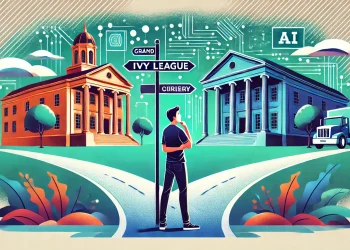No products in the cart.
Code Breakers: Why Every Student Should Learn Programming
Programming is the language of the future, offering students critical thinking skills, creativity, and career opportunities in a technology-driven world. Here’s why coding is an essential part of modern education.
In an era defined by technology, programming has emerged as an essential skill for students. From enabling groundbreaking innovations to fostering critical thinking, coding is no longer confined to silicon valley—it’s a universal language shaping the future. But for many, the question remains: Why should every student learn to program? The answer lies in its transformative potential, not only as a career tool but as a foundation for navigating the complexities of the 21st century.
The New Literacy
Just as reading, writing, and arithmetic defined the industrial age, coding has become the cornerstone of the digital age. Programming, often described as the “new literacy,” is increasingly critical in a world driven by software and algorithms. “Everyone in this country should learn to program a computer,” Steve Jobs once said, “because it teaches you how to think.”
Jobs wasn’t alone in this belief. Educators and policymakers globally are advocating for coding to be a core part of school curriculums. In 2012, Estonia became the first country to integrate programming into its national education system for students as young as seven. Today, countries like Singapore and the UK have followed suit, recognizing the importance of teaching students how to create, not just consume, technology.
Preparing for the Future of Work
The workforce is evolving rapidly, with technology transforming industries from healthcare to finance. According to the U.S. Bureau of Labor Statistics, employment in computer and information technology is projected to grow 15% from 2021 to 2031, much faster than the average for all occupations. Roles such as data analysts, software developers, and machine learning engineers are in high demand, and they’re just the tip of the iceberg.
However, coding’s relevance extends beyond traditional tech roles. Even careers in fields like agriculture, art, and journalism are leveraging programming. For instance, farmers use drones programmed with algorithms to optimize crop yields, while artists create generative designs with code. The World Economic Forum estimates that by 2025, 97 million new jobs will emerge due to automation, many requiring some level of programming expertise.
A study published in Frontiers in Psychology in 2021 found that learning programming enhances these skills, which are invaluable across disciplines.
Cultivating Critical Thinking and Problem-Solving
 Economic Development
Economic DevelopmentMapping the Global Pay Divide: A Look at Minimum Wages in 2025
Discover the stark contrasts in minimum wages across the globe in 2025, and what they signal for the workforce of…
Read More →Programming is more than writing lines of code; it’s about solving problems. When students learn to code, they’re trained to approach challenges systematically. This process, known as computational thinking, involves breaking complex problems into smaller, logical steps. A study published in Frontiers in Psychology in 2021 found that learning programming enhances these skills, which are invaluable across disciplines.
For instance, consider debugging—a core aspect of coding. Debugging teaches students resilience and persistence, as they experiment, analyze, and refine their work until they find a solution. These problem-solving skills translate seamlessly into real-world scenarios, from managing projects to resolving interpersonal conflicts.
Unlocking Creativity and Innovation
Coding isn’t just logical; it’s profoundly creative. By learning programming, students can build apps, games, websites, or even art projects. This blend of logic and creativity offers a sense of accomplishment that traditional education often lacks. For example, 16-year-old Emma Yang developed an app called “Timeless” to help Alzheimer’s patients recognize their loved ones through facial recognition technology. Emma’s story demonstrates how programming empowers young minds to address real-world problems creatively.
Moreover, platforms like Scratch and Roblox have made coding accessible to younger students, enabling them to create interactive games and animations. These tools not only teach technical skills but also ignite curiosity and innovation.
Bridging the Digital Divide
Despite its growing importance, access to programming education is not universal. A 2023 report by Code.org revealed that only 53% of U.S. high schools offer computer science courses. The gap is even wider in low-income and rural communities, where students often lack the resources to explore technology.
This disparity has significant implications. Without equitable access to coding education, underrepresented groups risk being left behind in the digital economy. However, initiatives like Girls Who Code and Black Girls Code are working to close these gaps, empowering students from diverse backgrounds to enter the tech industry. “Coding is the language of the future, and every girl should learn it,” says Reshma Saujani, founder of Girls Who Code.
 Consumer Goods
Consumer GoodsAffordable Elegance: The Rapid Rise of the Global Imitation Jewellery Market Through 2035
The global imitation jewellery market is poised for sustained growth through 2035, fueled by rising demand for affordable luxury and…
Read More →However, initiatives like Girls Who Code and Black Girls Code are working to close these gaps, empowering students from diverse backgrounds to enter the tech industry.
Preparing for an Automated World
Automation is reshaping the job market, and programming is at the center of this transformation. Artificial intelligence, robotics, and machine learning are automating repetitive tasks, creating a demand for workers who can design, manage, and improve these systems. As industries become more automated, programming skills will be critical for adapting to this new reality.
Even if students don’t pursue tech careers, understanding code will help them interact with the systems that increasingly govern our lives. Whether it’s deciphering how an algorithm determines credit scores or troubleshooting a smart home device, coding literacy empowers individuals to navigate a world steeped in technology.
A Universal Skill for a Globalized World
Programming is a global language, transcending borders and connecting people worldwide. Platforms like GitHub and Stack Overflow allow coders from different countries to collaborate on projects, fostering a sense of global community. Learning to code enables students to participate in this interconnected world, breaking down cultural and geographic barriers.
Additionally, coding opens opportunities for remote work, a trend accelerated by the pandemic. Skilled programmers can work for companies in any corner of the globe, expanding their career horizons far beyond local markets.
Building Confidence and Independence
For many students, coding is transformative. It instills a sense of empowerment as they learn to build something from scratch. Seeing their ideas materialize—whether it’s a game, app, or website—boosts confidence and fosters independence. This empowerment is particularly significant for girls and students from underrepresented backgrounds, who can use coding as a tool to overcome barriers and create their own opportunities.
Skilled programmers can work for companies in any corner of the globe, expanding their career horizons far beyond local markets.
The Call to Action
 Career Development
Career DevelopmentHow Young Professionals Are Navigating AI Anxiety in Today’s Job Market
Young professionals confront AI-driven automation with proactive skill-building and strategic career shifts, balancing adaptation with realistic optimism as the future…
Read More →The case for teaching every student to code is clear. Schools must prioritize programming education, integrating it into curriculums alongside traditional subjects like math and science. Policymakers should fund teacher training and provide resources to ensure equitable access to technology. Parents can encourage exploration through platforms like Code.org, Scratch, and Python.
For today’s students, coding is more than a skill—it’s a gateway to understanding the world, unlocking creativity, and preparing for a future where the only limit is imagination. As we navigate the digital age, learning to code is not just a choice; it’s an investment in a generation’s ability to innovate, lead, and thrive. In the words of Tim Cook, “Coding is the most important second language for everyone in the world to learn.” The time to start is now.











